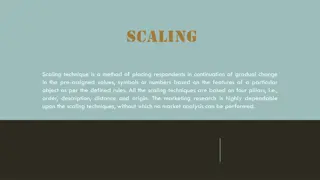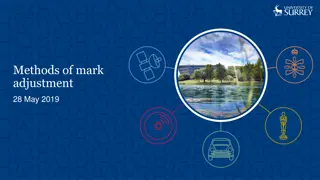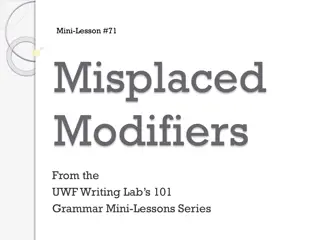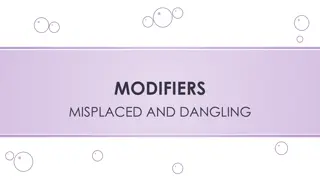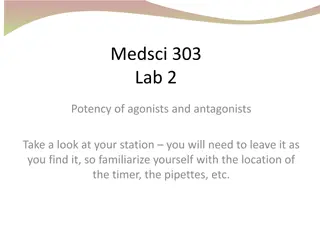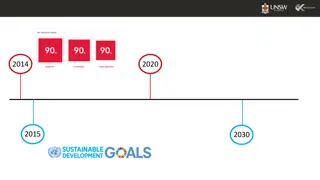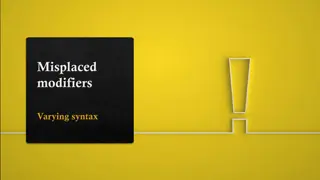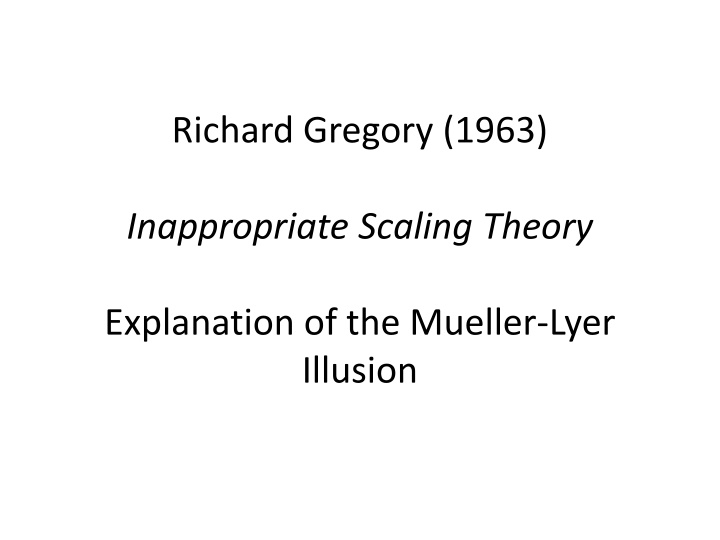
Inappropriate Scaling Theory for Optical Illusions
Discover Richard Gregory's Inappropriate Scaling Theory, which explains optical illusions like the Mueller-Lyer Illusion through issues related to depth perception and rescaling of visual information. Explore how the visual system processes 2D and 3D cues to determine object size and distance, leading to misperceptions. Gain insights into the analysis of the Mueller-Lyer Illusion and the role of 3D information in shaping perception and illusions.
Download Presentation

Please find below an Image/Link to download the presentation.
The content on the website is provided AS IS for your information and personal use only. It may not be sold, licensed, or shared on other websites without obtaining consent from the author. If you encounter any issues during the download, it is possible that the publisher has removed the file from their server.
You are allowed to download the files provided on this website for personal or commercial use, subject to the condition that they are used lawfully. All files are the property of their respective owners.
The content on the website is provided AS IS for your information and personal use only. It may not be sold, licensed, or shared on other websites without obtaining consent from the author.
E N D
Presentation Transcript
Richard Gregory (1963) Inappropriate Scaling Theory Explanation of the Mueller-Lyer Illusion
Inappropriate Scaling Theory The M-L Effect is a By-product of Issues Related to Depth Perception The Size of the Retinal Image is controlled by Size of the Object Smaller Object = Smaller Retinal Image Distance from Observer to Object Greater Distance = Smaller Retinal Image
Inappropriate Scaling Theory The Visual System Must Decide Whether Object is Small and Close Object is Big and Distant The Visual System uses 2 Sources of Info Binocular Cues Amount & Type of Disparity (Crossed vs. Uncrossed) Monocular Cues Pictorial Cues (ex: Closeness to Horizon Line)
Inappropriate Scaling Theory Line Drawings/Photographs are Odd Mix of 2D and 3D Information They are Located on Flat Surface (2D) They may contain 3D Cues indicating Depth
Inappropriate Scaling Theory Gregory s theory is some illusions are due to our responding to 3D info in the image and using that information Inappropriately to rescale the sizes of portions of the display His analysis of the Mueller-Lyer Illusion
Farther Away Closer
Analysis of Mueller-Lyer Illusion The 2 Red Shafts are the Same Size and the Same Distance from You Therefore Retinal Images are Same Size But the Angles of the Wings contain 3D info about Distance In-facing Wings indicate Shaft is Close Out-facing Wings indicate Shaft is more Distant Same Retinal Size but Farther Away means Out-facing Wings have longer Shaft.
Question for Lab Experiment Gregory argues that Wings contain 3D info to which we Respond Wing angle to Shaft is influenced by Distance in 3D world In-facing Wings: Closer to Shaft means Shaft is Closer to Viewer Out-facing Wings: Farther from Shaft means Shaft is Farther from Viewer
Question for Lab Experiment Experiment will Manipulate Wing Angle Question is Whether Manipulation of Wing Angle will produce Changes in Shaft Length as Predicted by Gregory
Question for Lab Experiment Gregory s Predictions In-facing Wings: In-facing Wings means that Shaft is closer Closer Shaft means that retinal image is larger Apparent larger size of Shaft should be discounted because it is closer Adjustable line length should be made shorter than standard
Question for Lab Experiment Gregory s Predictions Out-facing Wings: Out-facing Wings means that Shaft is farther away Far-away Shaft means that retinal image is Smaller Apparent smaller size of Shaft should be discounted because it is farther-away Adjustable line length should be made longer than standard
Question for Lab Experiment Gregory s Predictions Most extreme angles produce strongest distance Cues Should see gradual change in Size and Sign (+/-) of illusion as you go from one extreme to other.

